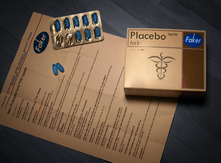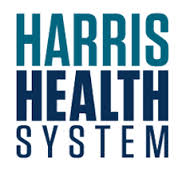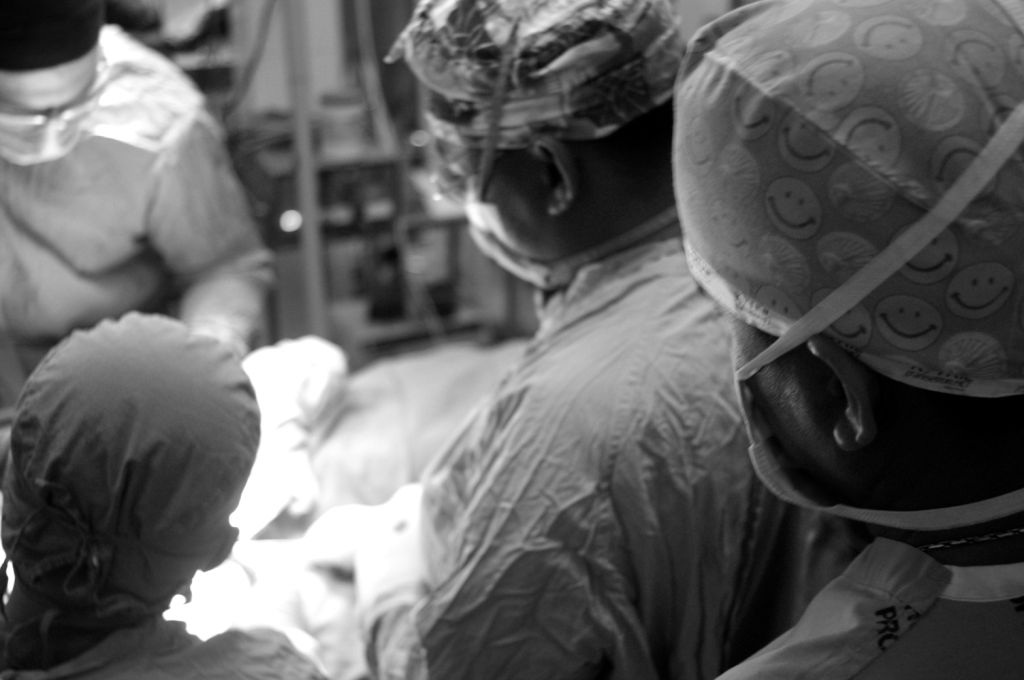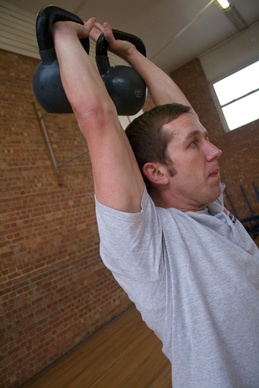- Home
- About Us
- TSPT Academy
- Online Courses
-
Resources
- Newsletter
- Business Minded Sports Physio Podcast
- Day in the Life of a Sports PT
- Residency Corner
-
Special Tests
>
-
Cervical Spine
>
- Alar Ligament Test
- Bakody's Sign
- Cervical Distraction Test
- Cervical Rotation Lateral Flexion Test
- Craniocervical Flexion Test (CCFT)
- Deep Neck Flexor Endurance Test
- Posterior-Anterior Segmental Mobility
- Segmental Mobility
- Sharp-Purser Test
- Spurling's Maneuver
- Transverse Ligament Test
- ULNT - Median
- ULNT - Radial
- ULNT - Ulnar
- Vertebral Artery Test
- Thoracic Spine >
-
Lumbar Spine/Sacroiliac Joint
>
- Active Sit-Up Test
- Alternate Gillet Test
- Crossed Straight Leg Raise Test
- Extensor Endurance Test
- FABER Test
- Fortin's Sign
- Gaenslen Test
- Gillet Test
- Gower's Sign
- Lumbar Quadrant Test
- POSH Test
- Posteroanterior Mobility
- Prone Knee Bend Test
- Prone Instability Test
- Resisted Abduction Test
- Sacral Clearing Test
- Seated Forward Flexion Test
- SIJ Compression/Distraction Test
- Slump Test
- Sphinx Test
- Spine Rotators & Multifidus Test
- Squish Test
- Standing Forward Flexion Test
- Straight Leg Raise Test
- Supine to Long Sit Test
-
Shoulder
>
- Active Compression Test
- Anterior Apprehension
- Biceps Load Test II
- Drop Arm Sign
- External Rotation Lag Sign
- Hawkins-Kennedy Impingement Sign
- Horizontal Adduction Test
- Internal Rotation Lag Sign
- Jobe Test
- Ludington's Test
- Neer Test
- Painful Arc Sign
- Pronated Load Test
- Resisted Supination External Rotation Test
- Speed's Test
- Posterior Apprehension
- Sulcus Sign
- Thoracic Outlet Tests >
- Yergason's Test
- Elbow >
- Wrist/Hand >
- Hip >
- Knee >
- Foot/Ankle >
-
Cervical Spine
>
- I want Financial Freedom
- I want Professional Growth
- I want Clinical Mastery
 Each month at the Harris Health Orthopedic Residency, one of the clinicians holds a journal club. Last month, one of my fellow residents and I chose to lead the journal club. We chose the recent JOSPT editorial written by Dr. Benz and Dr. Flynn entitled, "Placebo, Nocebo, and Expectations: Leveraging Positive Outcomes." This article was a great introduction to the topic of the Placebo Effect. To begin, you must first ask yourself: "How much do I currently use the placebo effect in my practice?" or better yet, "Am I using placebo effects without knowing it?" A placebo is defined as a simulated or otherwise medically ineffectual treatment for a disease or other medical condition intended to deceive the recipient. To answer the first question, we ALL use placebos with each patient interaction, whether intentionally or not. Our clinical mannerisms, our tone of voice, how we dress, and the clinic environment are all placebo effects. BUT, in order for a placebo to be effective, the patient must be able to assign a positive meaning to these things. An interesting study looked at two groups of people given a certain medication. One group was given an Aspirin, the second group was given the generic form of Aspirin. The chemical composition was the exact same; however, the group who received Aspirin had much better results. How is this possible? The group who received Aspirin were able to assign a meaning or positive correlation with that intervention. They could both physiologically and psychologically agree with the treatment, and therefore the treatment was more effective. The placebo effect is all about expectations! Dr. Benz and Flynn conclude the editorial by saying we should use the placebo as another "tool in the proverbial tool kit." They say that the power of the mind to react positively to a genuinely weak (think sham) but perceptually agreeable intervention is far more compelling than forcing a highly evidenced based intervention on a patient who cannot assign meaning to that intervention. Next time you are trying to "sell" a patient on an intervention, think about the words you use, how you approach the subject, and the patient's expectation. Above all, act confident. If you display confidence in the treatment, the patient will have more confidence as well. -Jim
2 Comments
Something you may have realized by now is that you rarely get a patient with just and orthopaedic condition. Frequently, patients have multiple co-morbidities that affect how you can implement your interventions. Or maybe you get a referral for something like "balance/gait training." We have received referrals for "cervical strain," but the primary concern is the patient's balance deficits. These are just neurological examples. Consider a patient with deficits in the hand or B&B involvement. These conditions are perfect for consulting a hand therapist or pelvic floor therapist respectively. Sometimes it is essential that a patient receives multiple forms of therapy. A patient's underlying pelvic floor dysfunction may be related to the neurological symptoms in the lower extremity! In a setting like we have with hand therapists, neuro PTs, ortho PTs, pelvic floor PT, and speech therapists, we are able to consult regularly with any aspect of our case. On the flip side, you often get consulted by them for orthopaedic concerns! We have been asked to quickly examine patients of the neuro PTs, occupational therapists, and pelvic floor PTs multiple times. Often following this examination, patients may require a script for orthopaedic physical therapy or potentially they just need a quick manual therapy treatment for the problem. Either way, you can see how beneficial it is being in a multi-disciplinary setting like this. You have the ability to consult with other practitioners that could be key components to your care, along with being consultants for potential underlying orthopaedic issues!
-Chris and Jim  People always say that time goes by faster as you age, but I had never really thought about the truth of his statement until this year. When I was a student, time seemed to have no relevance. School was a protective bubble from reality. Now that I am working and have the freedom to create my own schedule, my scope of time has changed. It is hard for me to grasp that I have already been at the Harris Health System for 3 months. I am not sure if the time has gone so fast because of the hard work and long hours or simply because it has been a fun adventure. I am going to sum up my experiences thus far in 3 words: Challenging, Mentorship, and Growth. Challenging: Being part of any Orthopedic Residency program is challenging (as it should be). It is a 1-yr program that prepares someone to take a Specialty Examination. If it was not difficult, I would be questioning why I was there. But the intensity of the Harris Health Residency has been unique. I was always considered a fairly competent PT student from my clinical instructors. When first arriving at Harris Health, regardless of my clinical competence, I had to overcome the barriers of working with a complex patient population. Since I work at the county hospital, many of my patients speak Spanish as their primary language (I do not speak Spanish). They come from low socioeconomic backgrounds and have little health awareness. Little health awareness+ Low socioeconomic status + multiple comorbidities= Chronic pain. Regardless, I spent the first few weeks understanding my environment and learning how to treat this special population. As I was trying to keep my head above water in the clinic, I was also taking 3 didactic modules: Foundational Sciences, Sports/ Exercise Prescription, and Research. My residency director, Dana Tew, places these 3 modules first because of the high importance placed on differential diagnosis and understanding how to read the literature. All 3 modules were incredible learning experiences and each discussed their respective topics in much more detail than I received in PT school. The other aspect that makes Harris Health challenging (and awesome) is that everyone else in the clinic is much more intelligent than you. In the clinic gym, I am practicing around 6 or 7 OCS and FAAOMPTs. This combination of specialty degrees exists in ~1% of all physical therapists. Having a handful of them practicing next to you and mentoring you is unheard of (literally there are only a few other clinics in the entire country with this level of specialization). Every clinician is working towards or has achieved specialization. Mentorship: Mentorship is the #1 thing that separates a residency program from any typical first job. At Harris Health we receive a minimum of 5 mentor hours per week. I switch mentors every 10-12 weeks to learn different skills and see different practice styles. Essentially, they watch me treat a patient and provide critical feedback on how to become a more efficient practitioner. Aside from improving my treatment style, the mentors have also helped advance my manual techniques. If a patient does not show up to their appointment, we drop the books and practice techniques. These practice sessions have really helped hone my palpation skills and improve my diagnostic abilities. It is these 1-on-1 sessions that have helped my clinical skills the most. Growth: It is often hard to detect change in your practice or personal growth unless you take a moment to reflect on where you once were. Coming out of PT school, I knew a little on a bunch of subjects. Translating that into practice, my evaluations were all over the place. I wanted to know every impairment and practice every test. One way the residency has helped me grow is in my efficiency. For example, if a patient demonstrates a positive Trendelenburg during a gait assessment, there is no need to test their posterior gluteus medius strength. They have already demonstrated weakness during a functional test. The art of observation is such a simple skill that is constantly overlooked. Taking a step back from your patient and looking at their injury in the context of their life will do great things for your treatment session and expectations for achieving goals. I would definitely not call myself an expert, but I am getting much better at synthesizing this information and diagnosing accordingly. In summary, my first 3 months have been great. As with anything in life, the amount of hard work and dedication you put into something will correlate with how much you receive in the end. To anyone who is on the fence about pursuing a residency, I highly recommend it. If a challenging experiences, Mentorship, and Professional Growth are things you are interested in, check out the Harris Health System Residency. Applications are due Feb. 1, 2014. -Jim
One of the components I love about this residency at Scottsdale Healthcare is the amount of information to which we are exposed. One of the core sets of readings we have includes the APTA Orthopaedic Section's Current Concepts for each joint, both standard and post-op. These readings give us some of the most up-to-date findings regarding ROM measurements, anatomy, special tests, examination and treatment techniques. What is really nice is that the authors of each section are typically the ones responsible for writing the questions on the OCS exam.
While the information from the Current Concepts readings is useful for treating each pathology, it unfortunately can stray away from a more important part of our plan of care. The Current Concepts readings (and much of what we were taught in PT school) function in that they identify the source of the pain and how to treat that specific structure and the pathologies associated with it. What they don't do is help us identify the cause of the of pain development in that structure. Another large chunk of our readings come from Sahrmann's Movement Impairment Syndromes books. She emphasizes the importance of assessing subtle joint movements. These are often the key to determining why a patient developed pain. Take a patient with groin pain with hip flexion. Our special testing may tell us that there is some femoral acetabular impingement, but WHY is that occurring? Reading the evidence alone will tell you it's because of bony deformities such as pincer and CAM lesions, but remember how bone deformities develop. Bone grows in response to stress. That means that often the CAM and pincer lesions only developed as a result of repeated contact as a result of abnormal joint mechanics (yes there are likely genetic bone deformities as well). By assessing the actual joint mechanics we can determine why that impingement ever started. Sahrmann teaches using palpation of the greater trochanter during hip flexion (or the affected motion) to determine the mechanics. If the greater trochanter glides anteriorly with hip flexion, it's no wonder the patient is experiencing impingement! Often this is a result of decreased strength of gluteus maximus and iliopsoas, along with the patient having a preference for recruitment of hamstrings for hip extension and a tight posterior capsule. Another example I have seen quite frequently since starting my residency has involved shoulder impingement. In school and in the literature, subacromial impingement is the primary type of impingement addressed. We are taught to utilize special tests and clusters to determine the diagnosis. Following accurate diagnosis, research gives us exercises that are commonly used for treating that diagnosis. What is the problem with this? Again we are ignoring why the patient developed impingement in the first place. Without understanding the cause, we may be incorrect with the type of impingement. Since covering this material in the residency, I have found far more cases of anterior glide/impingement compared to "subacromial impingement." Often your patients with the many types of impingement may test positive for your subacromial impingement clusters. This can be problematic if you are treating your patients based on diagnosis as opposed to an impairment-based approach. The types of impingement often require very different methods of intervention. If you are doing a thorough examination, you will find the accurate impairments and treat accordingly anyway! A lot of what Sahrmann teaches is common sense to the physical therapist upon retrospect. If we are thorough with our evaluation and treat the impairments (strengthen, mobilize, motor control training!), we would end up with the same result. Yet, Sahrmann's readings do an excellent job of bringing everything together and forcing us to actually live up to our name - movement specialists. It is easy to get lazy and not do a thorough movement analysis at the joint level. While special tests have their place (especially in the acute/traumatic cases), I am finding the use of them less and less important the more I work with an impairment and movement-driven approach. By going back to anatomy and fully assessing movement, we can determine why the structure ever developed pain in the first place and restore proper movement patterns. -Chris |
Copyright © The Student Physical Therapist LLC 2023



 RSS Feed
RSS Feed